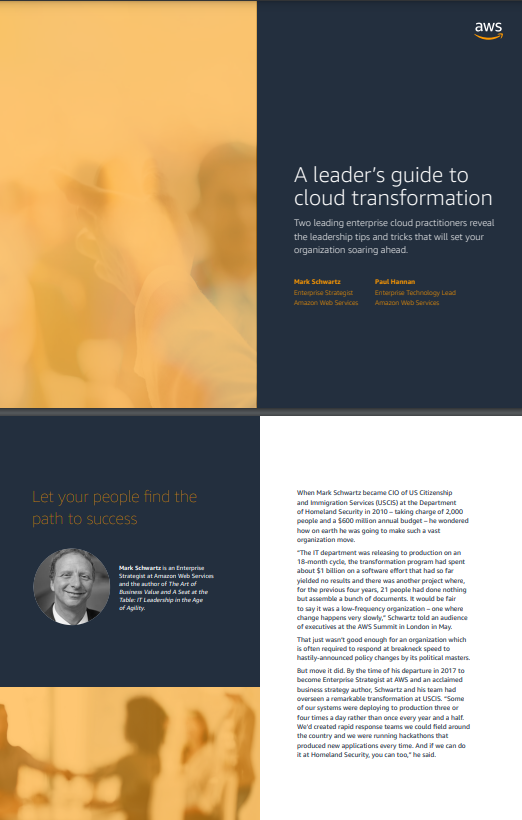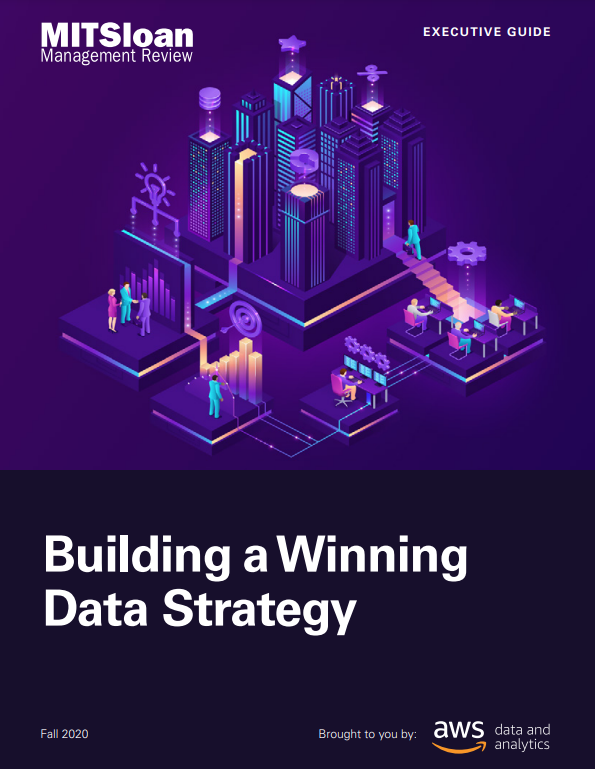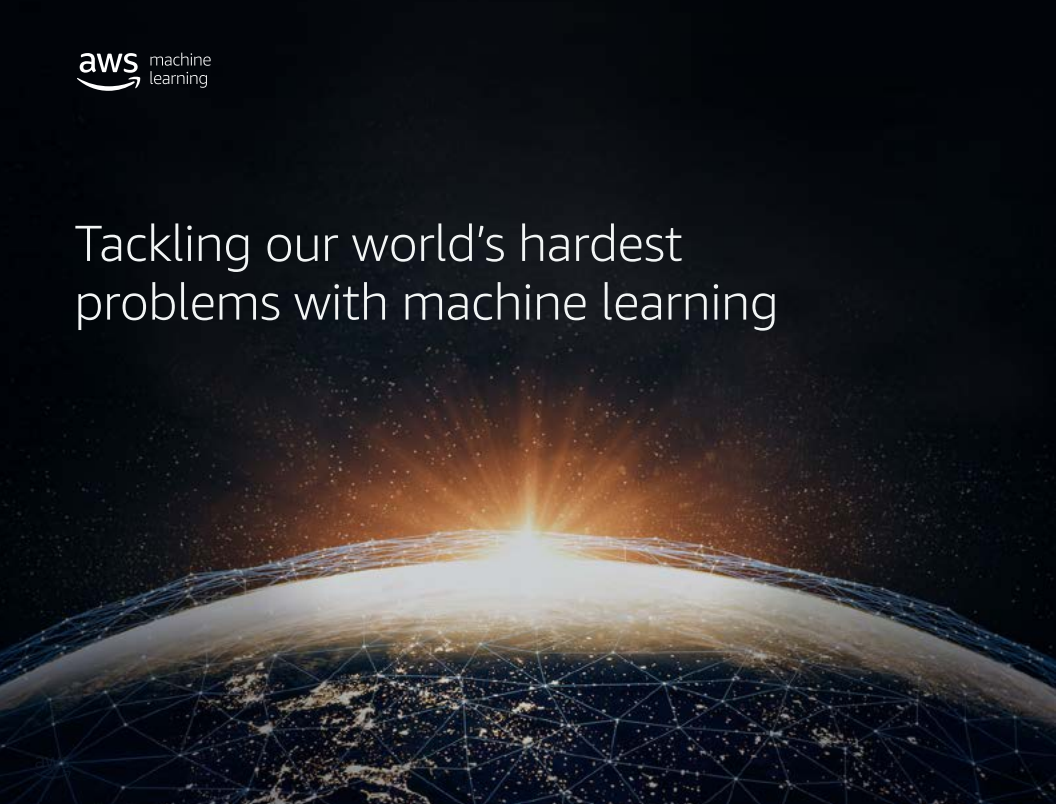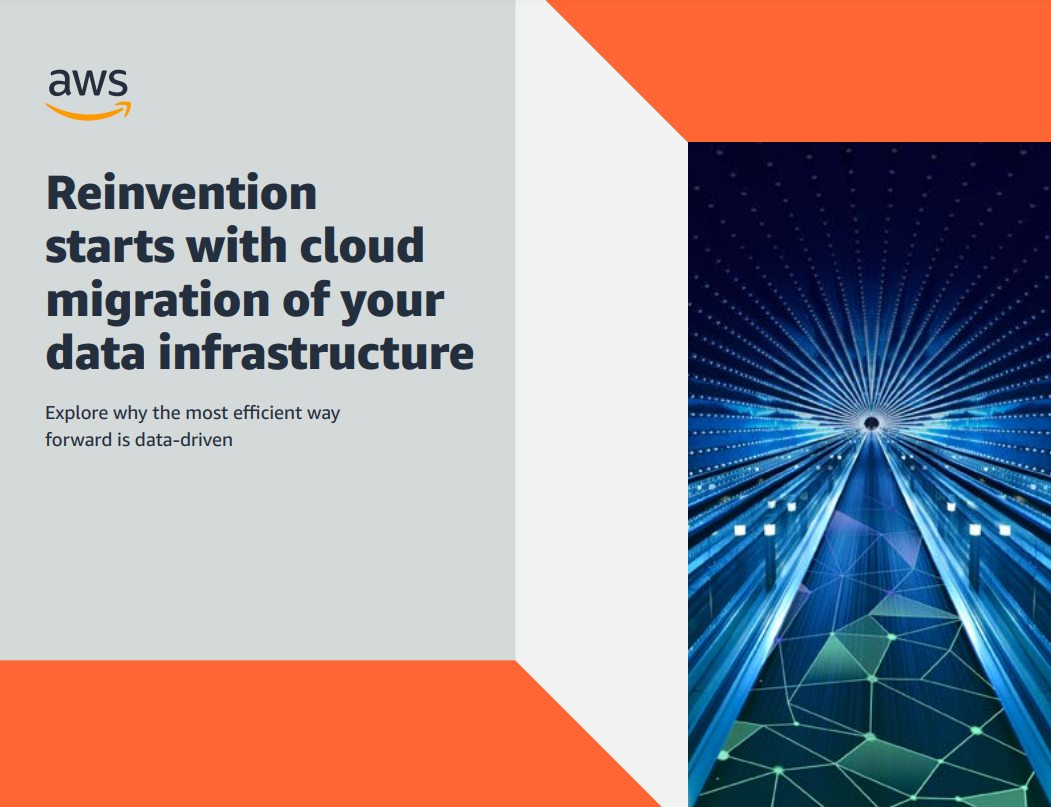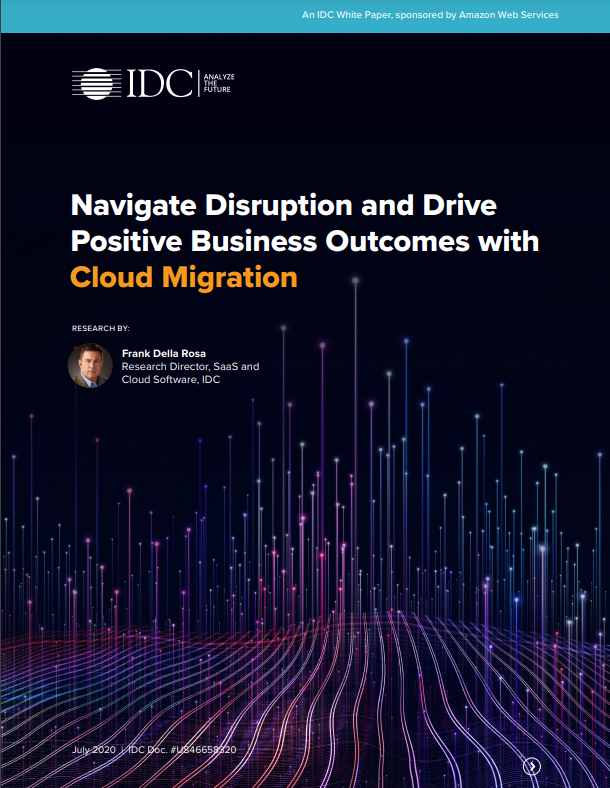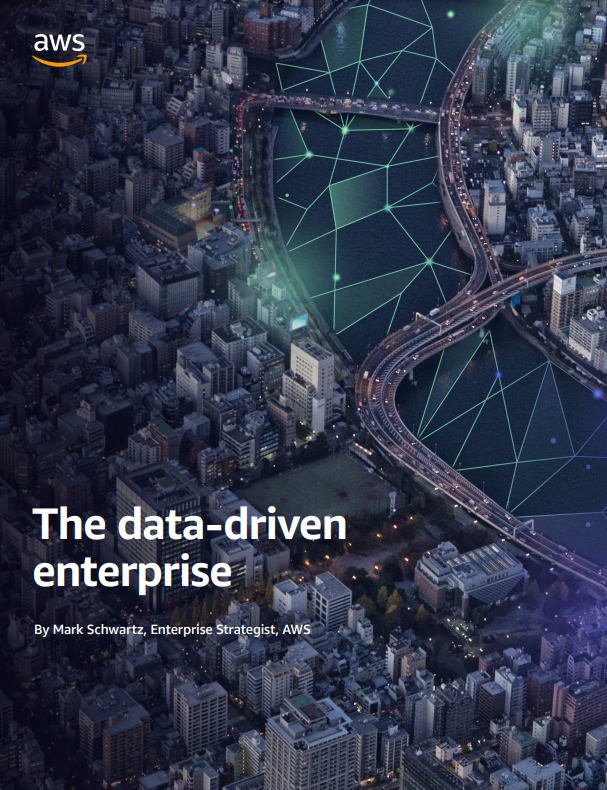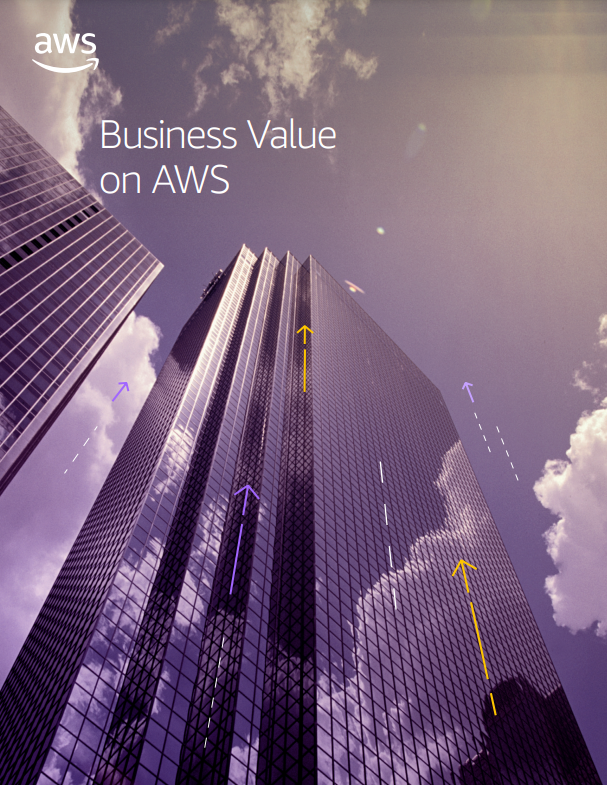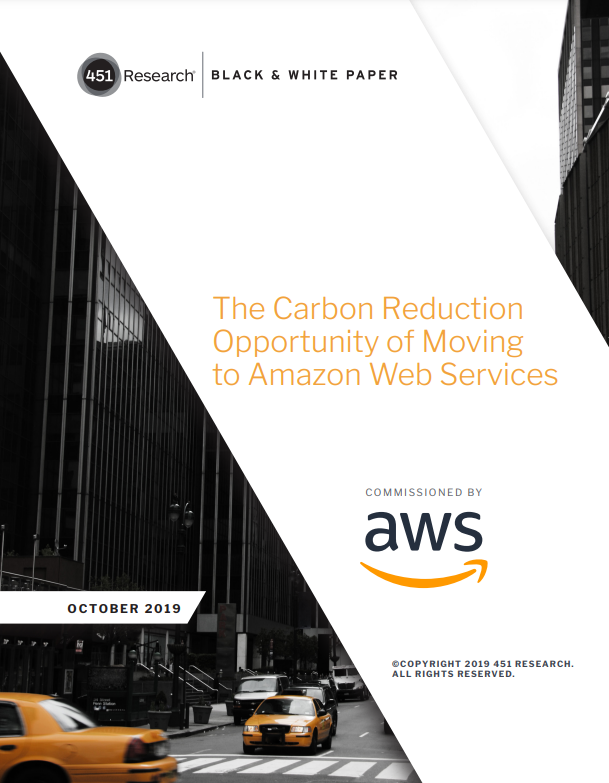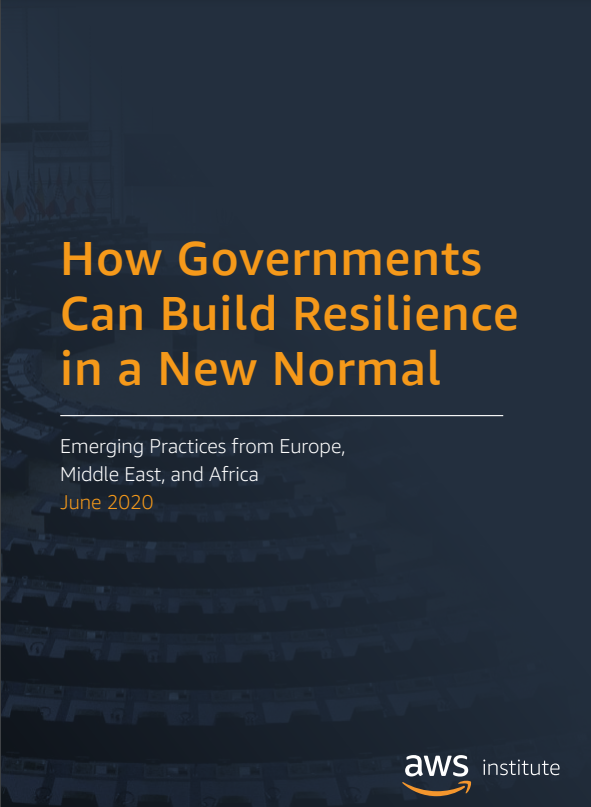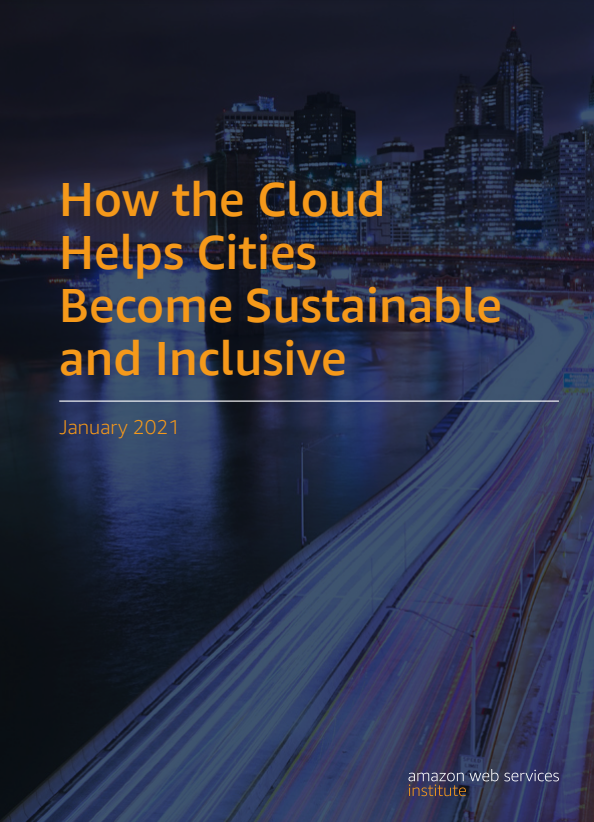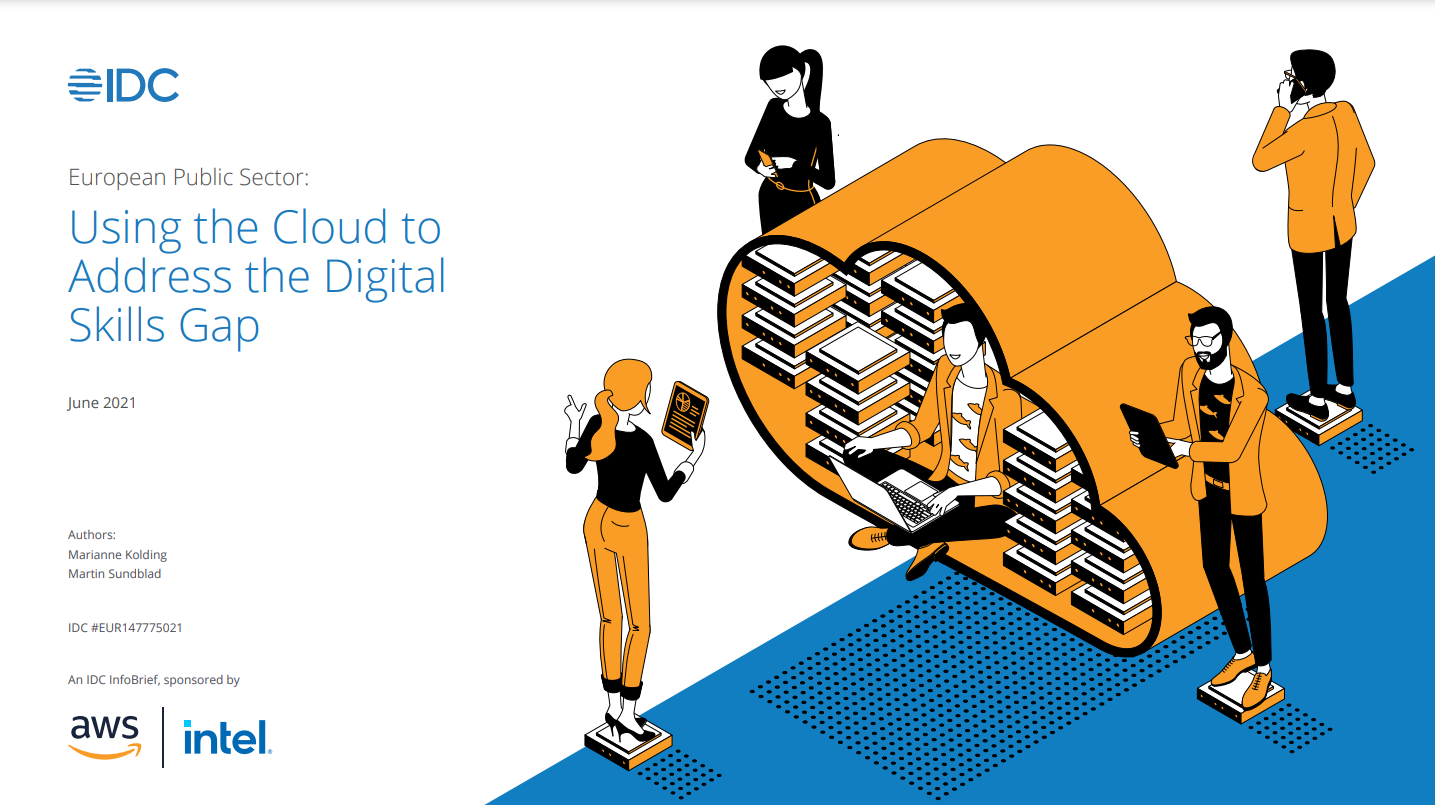AWS
Success
You have successfully submitted your enquiry. Someone from our company will respond ASAP
Amazon Web Services, Inc. is a subsidiary of Amazon providing on-demand cloud computing platforms and APIs to individuals, companies, and governments, on a metered pay-as-you-go basis.

White Papers
A leader’s guide to cloud transformation
When Mark Schwartz became CIO of US Citizenship and Immigration Services (USCIS) at the Department of Homeland Security in 2010 – taking charge of 2,000 people and a $600 million annual budget – he wondered how on earth he was going to make such a vast organization move. “The IT department was releasing to production on an 18-month cycle, the transformation program had spent about $1 billion on a software effort that had so far yielded no results and there was another project where, for the previous four years, 21 people had done nothing but assemble a bunch of documents. It would be fair to say it was a low-frequency organization – one where change happens very slowly,” Schwartz told an audience of executives at the AWS Summit in London in May. That just wasn’t good enough for an organization which is often required to respond at breakneck speed to hastily-announced policy changes by its political masters. But move it did. By the time of his departure in 2017 to become Enterprise Strategist at AWS and an acclaimed business strategy author, Schwartz and his team had overseen a remarkable transformation at USCIS. “Some of our systems were deploying to production three or four times a day rather than once every year and a half. We’d created rapid response teams we could field around the country and we were running hackathons that produced new applications every time. And if we can do it at Homeland Security, you can too,” he said.
Building a Winning Data Strategy
In order to compete in the new digital economy, businesses must become increasingly data-driven. Few executives would dispute this objective. Recent events, including the global outbreak of COVID-19, have underscored the critical importance of having reliable data to inform organizational decision-making. Yet companies continue to struggle to operate in a data-driven manner. Why? Even though we are now decades into the age of competing with data, a 2020 NewVantage Partners survey of C-suite executives representing more than 70 Fortune 1000 companies found that only 37.8% of companies have created a data-driven organization. In the same survey, 45.1% of executives reported that they compete on data and analytics, but a majority — 54.9% — stated that they do not.
Tackling our world’s hardest problems with machine learning
Amazon Web Services (AWS) puts machine learning in the hands of every developer, data scientist, and expert practitioner. And every day, these individuals leverage and apply machine learning in new ways for the benefit of society. From decreasing carbon emissions to improving safety in the workplace, the methods in which today’s leaders apply machine learning reveal a tremendous opportunity to improve lives and the world in which we live.
Enable Contact Center Agents to Work from Wherever They Need to Be
A greater focus on customer experience is driving businesses into a new era for contact centers— where global teams of agents are empowered by technology to maximize their productivity, delight customers, and create competitive differentiation. The contact center is often the first or most urgent of your customer touch points, serving as a 24/7 global face and voice of the company. As such, businesses are increasingly finding ways to incorporate contact centers into the larger customer experience—transforming them into profit centers and ensuring they reflect the company’s values, messaging, and commitment to service. To effectively and securely meet these needs, businesses are employing fast-growing global fleets of both centralized and remote workers. However, this paradigm shift has raised several challenging technology questions for contact center leaders, such as: How do I rapidly enable my agents to work from home effectively? How do I quickly onboard new agents to meet unprecedented spikes in call volume? How do I maintain compliance with government regulations and security best practices from a remote environment?
Reinvention starts with cloud migration of your data infrastructure
Data modernization marks a defining moment for any organization seeking to reinvent itself. With data becoming the new organizing principle—and the beating heart of successful, modern organizations—the individuals tasked with using data to make decisions and solve problems want to leverage it to become more agile, efficient, and innovative. Major market trends influencing technical investments indicate this next-level focus on data will continue for the foreseeable future. IDG's 2021 State of the CIO Executive Summary lists data and business analytics as the number-one initiative driving technology investments, a clear indication that the ability to collect, process, and understand data defines an organization’s capacity to adapt and thrive into the future. While organizations understand the importance of data, they struggle with their existing on-premises data infrastructure, which has become increasingly complicated, requiring a large staff with additional investments that take time, money, and focus away from innovation and application development. Lowered expectations about data storage, management, and processing capabilities undermine competitiveness as well. Current market dynamics are all the motivation many leaders need to become data-driven; leaders bogged down with time-intensive on-premises administrative work get pushed further and further away from that drive.
Navigate Disruption and Drive Positive Business Outcomes with Cloud Migration
This IDC paper presents a business value-driven approach to cloud migration in support of digital transformation and adapting to unforeseen disruptions. The goal is to provide, or at least contribute to, a blueprint for a successful and resilient enterprise that seamlessly operates in the cloud. Multiple case studies have been included to share lessons learned and best practices while demonstrating how industry leaders use cloud migration as a change agent for their company’s digital transformation. Quotes in this white paper are derived from IDC interviews with AWS Cloud customers.
The data-driven enterprise
There is a lot of talk these days about the data-driven enterprise and the need to become one. But what exactly does it take to become data-driven, and why is it so important in today’s digital environment? What practical steps can an enterprise take to make data fundamental to its mindset and practices? And what is the connection between data and that other priority of the digital age—business and technical agility? This eBook will show what it means to be datadriven and give some examples of how companies are using data to drive their businesses. We’ll also connect the dots between becoming data-driven and agility, digital transformation, and continuous innovation. Data-driven organizations strive to base their strategic business decisions on the evidence provided by data—which requires a certain rigor and, at the same time, an ability to innovate based on identifying—within the data—opportunities that can lead to new products or markets. They also come to treat data as an asset they can use both to improve customer interactions and to increase efficiency. In other words, they analyze data to inform decision-making and use data to serve their customers. Data can be the basis, for example, for personalization, dynamic pricing, market expansion, product innovation, or supply chain optimization. But until recently, enterprises found it difficult to use data in these ways because they thought of data solely in the context of transactions; as a result, they locked it away in siloed databases that were excellent for transaction processing but less suited to open-ended analysis. Our mental model was that of the invoice or the order form: “Please give me 20 widgets at a price of $100 per widget.” Or, “Please pay me for 20 widgets at $100 per widget.” Data was performative and imperative—a stimulus or artifact of conducting a transaction. Today, the value of data goes far beyond its transactional role.
Business Value on AWS
The Cloud Value Framework enables organizations to build a comprehensive business case for cloud computing by measuring their progress across four dimensions of value. AWS Cloud Economics developed the Cloud Value Framework by working with more than 100 of our enterprise customers and analyzing over 1,500 public AWS case studies. This eBook provides an overview of how the cloud is transforming business and an analysis of the four dimensions of the Cloud Value Framework listed above.
The Carbon Reduction Opportunity of Moving to Amazon Web Services
Enterprises use public cloud infrastructure for various reasons, but faster time-to-market and the ability to flexibly scale resources to track workload demand are the top two drivers, according to 451 Research’s Voice of the Enterprise survey on cloud, hosting and managed services. This is particularly true for organizations further down the line in their digital transformation, which shows enterprises increasingly value the agility and scalability of cloud as they grow more acquainted with it. Moving workloads to public cloud infrastructure also presents enterprises with the opportunity to dramatically reduce the environmental footprint of their IT operations. Climate change and its effects direct more attention at resource efficiency as a key part of sustainability responsibility, which is of growing importance to businesses. In 2018, 86% of the companies in the S&P 500 index published a sustainability report, up from only 20% in 2011, notes the Governance and Accountability Institute. Enterprises want to be seen as responsible corporate citizens, and many have made sustainability commitments and achieved progress in multiple areas of their operations. Yet even with an emphasis on sustainability, running data centers and IT is not a core competency of most enterprises, many of which lack the expertise and resources to make major investments in infrastructure efficiency. Similarly, most enterprises are not prepared for the effects of climate change (such as extreme weather conditions, drought or floods) on their data center operations. To estimate the environmental benefits for enterprises moving to its public cloud infrastructure, Amazon Web Services commissioned 451 Research, a technology market research and advisory firm, to conduct a study on the energy and carbon efficiency of enterprise data centers and server infrastructure. For this study, we focused on US enterprises with revenue between $10m and $1bn, businesses that face IT challenges similar to those of larger enterprises, often with smaller budgets and less IT expertise. Even when enterprises invest in newer infrastructure, they still have to provision for peak demand, and many energy-efficiency measures are only viable at the scale of thousands of servers and when applying advanced design techniques (e.g., efficiency-optimized custom servers, wide temperature bands and indirect evaporative cooling). This means that moving workloads to the cloud can help enterprises steeply reduce energy consumption and their carbon footprint compared to their internal operations.
How Governments Can Build Resilience in a New Normal
The COVID-19 pandemic has demonstrated that public sector organizations need the proper infrastructure, capabilities, and controls to overcome disruptions caused by global health outbreaks and the associated lockdown measures. Organizations that embraced cloud services proved more responsive. They were able to continue operating remotely and serving their customers, demonstrating agility, scalability, and speed. Powering this transition is cloud technology and a remote-first mindset. For years, the cloud has enabled enterprises and public sector organizations to access a wide range of services on demand—from data storage to machine learning and artificial intelligence. The cloud’s scalable, secure, and low-cost infrastructure helps organizations modernize and innovate, obtain insights to make better decisions, and instantly connect to the public. The cloud’s elasticity enables organizations to scale services up and down as needed, optimizing the use of resources, which helps governments save cost. A few days after the global lockdown, it became clear that organizations that had adopted cloud services were well positioned to overcome the challenges of working remotely. They could simply access hundreds of services, rapidly scale to accommodate spikes in demand, and create new technologies to respond to emerging customer needs. For example, in the UK, AWS partner VoiceFoundry is using AWS to help local government manage increased call volumes due to COVID-19. Two London councils, the London Borough of Hounslow and the London Borough of Waltham Forest, built a virtual contact center to respond to inquiries from the public while ensuring staff safety by enabling them to work remotely. London Borough of Waltham Forest now handles calls from more than 3,000 residents and customers a day, while London Borough of Hounslow’s Community Support Hub helps the most at-risk and vulnerable residents in the community receive up-to-date information, food, and essential supplies. The Hub has made and received thousands of calls to date, a number that is continuing to increase each week. Scale, speed, and security were particularly important as demand for services became virtual. In Italy, AWS and education technology (EdTech) company bSmart labs scaled virtual classrooms to a third of the country’s schools within the span of one week. The World Health Organization is using AWS to build large-scale data lakes, aggregate epidemiological country data, and assist global healthcare workers in better treating patients. We saw governments use open source services to address mission-critical community needs. Governments in the UK, Australia, and Canada are but a few that have built open source solutions to facilitate information sharing. To accelerate the combined global response to COVID-19, AWS gathered examples of third-party open code, tools, and standards and launched Open Government Solutions for anyone in the public sector to use immediately.
How the Cloud Helps Cities Become Sustainable and Inclusive
Cities are expected to be home to two-thirds of the world’s population by 2050, according to the United Nations1. As the population expands so does the imperative to make sure that urban infrastructure and services can accommodate growth. Cities are adopting innovative technology to meet rising demands on public services and infrastructure, as well as to address urban challenges related to the environment, national security, and public health, among others. Information and communications technology advances of the 1990s gave rise to the smart city, or a city that continuously enhances quality of life for its residents, providing efficient and effective services, using technology and data. Today’s technology—including cloud services and the Internet of Things (IoT)—promises to unleash a new wave of innovation and transform cities into economic hubs that serve as safe and healthy homes for their residents. It offers solutions not just to economic and logistical challenges but also to social and environmental issues plaguing cities around the world, including public health crises and natural disasters. Data, and the technology used to collect it and turn it into insights, are a means to an end: to better serve residents. Cloud technology offers a reliable infrastructure to administer services. The cloud provides data privacy and allows leaders to focus their time and resources on innovating for their residents. And even though cloud technology helps optimize resource allocation and improve decision-making, the process of transforming cities requires the leadership and active participation of citizens. This paper examines how cities are using cloud technology to address public challenges with the framework of the Smart Cities Council global coalition. This framework promotes three core values for smart cities: livability, providing clean, healthy living conditions without pollution and congestion; workability, providing an enabling infrastructure (energy, transportation, internet connectivity) and high-quality jobs; and sustainability, doing so at no cost to future generations, as the Council puts it. This paper proposes a fourth core value, inclusivity: provisioning services to all city residents regardless of their background.
Using the Cloud to Address the Digital Skills Gap
Before the pandemic, European healthcare organizations were exploring IT solutions to face cost and funding pressures, focusing on improving business process efficiency. COVID-19 has accelerated the digital transformation of health processes and solutions to build digital ecosystems, but there is still a lot to be done to improve coordination of care and use of patient data both in this moment of crisis management and for the long term. There will be greater uncertainty, and healthcare systems will need to adapt. They must be able to cater to emergency situations without neglecting the population’s existing health needs. Healthcare organizations have been forced into new care delivery models to build modern operating models, including the rapid adoption of remote-care options for improved patient experience, such as telehealth, remote patient monitoring, and remote intensive care units (teleICU). Along with the intelligence platforms that support them, these are the first signs of a more innovative business model.

